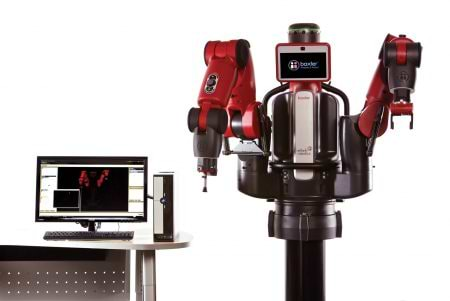A robot is an autonomous or semi-autonomous electromechanical system that couples inputs, such as sensors, with actuators, such as motors via a control system. This control system and its overall ability to control the robot in a logical manner is often compared to the human brain.
While advances in computational reasoning have been significant in recent years, the most advanced robot brain is still nowhere near as capable as our own grey matter.
The term ‘Robot’ was coined in 1920 by the Czech writer Karel Capek, in his play about humanoid wage slaves titled "Rossum’s Universal Robots". The word derives from ‘robota’, literally: "serf labour", but more figuratively associated with drudgery or hard work in Czech.
Our perception of robots is often coloured by science fiction, within the medium of books or film it is easy for writers to overestimate technology in the short term, and this overestimation of robotic ability, coupled with often hostile robots can lead to a fear that robots will take our jobs. The real fear among roboticists is that we will not be able to develop robots capable of doing all the tasks we require of them fast enough.
Robots are designed to be very specialised in the tasks they are capable of, they are programmed to do a small number of tasks and to do them repeatably, accurately and reliably. A robot on a car production line may be excellent at welding a very specific part of a chassis, but ask it to explore Mars and you won’t get much useful information back. Conversely the Curiosity Rover on Mars won't be building any cars, but is helping further our knowledge of the solar system.
Robots are traditionally tasked with performing the "4 D's", tasks that are described as Dirty, Dangerous, Dull or Distant. The ability of robots to perform tasks, that are loathed by humans, without complaint, is a key benefit to modern manufacturing, without robots the UK car industry would have off-shored to a cheaper manufacturing base many years ago. Robots sent to places where humans cannot venture allow us to protect ourselves while still performing high risk tasks, be it bomb-disposal, nuclear decommissioning, and deep-sea or space exploration.
The key for the future is to ensure that we collaborate with robots and work alongside them, using them as a tool to increase human productivity and capability. In the 1980's the PC revolution provided a tool for office workers to do this; spreadsheets performed the basic arithmetic, leaving the human to the higher level tasks. The same is now possible for other, more physical tasks, using collaborative robotics. Be it a soldier utilising a bomb-disposal robot to reduce risk, or a factory worker using Baxter to increase productivity the future of robotics is a collaborative one.
Introduction to Robots
Categories: Information
Tags: Baxter & Baxter Research Robot
Posted On: May 9, 2014
Posted By: Greg Lovedale
Search
Recent Posts
- Phidgets VINT Hub gets a speed upgrade
- 3Pi+ Mobile Robot OLED display
- Data Acquisition and Control Hardware - a LabJack User Guide
- The all new goBILDA range, the prototyper’s favourite build system is now available in metric.
- NED Robot a NEW - low cost 6-axis Cobot for Education, Vocational training & Research laboratories
Archives
- February 2022
- December 2021
- September 2021
- March 2021
- February 2021
- January 2021
- October 2020
- March 2020
- January 2020
- December 2019
- November 2019
- June 2019
- May 2019
- April 2019
- March 2019
- February 2019
- January 2019
- November 2018
- October 2018
- September 2018
- August 2018
- July 2018
- January 2018
- November 2017
- September 2017
- August 2017
- July 2017
- January 2017
- August 2015
- May 2015
- March 2015
- February 2015
- January 2015
- December 2014
- November 2014
- October 2014
- September 2014
- August 2014
- July 2014
- June 2014
- May 2014
- April 2014
My Wish List
